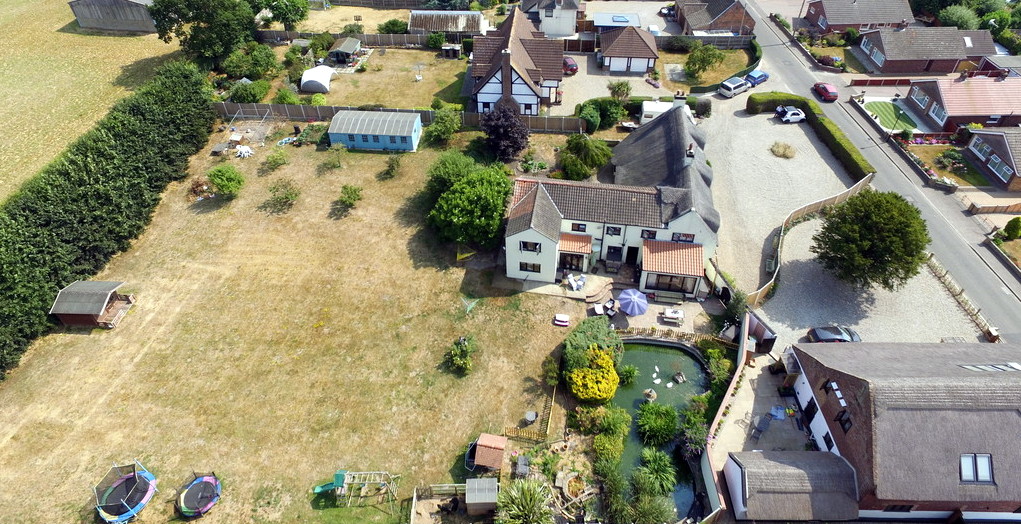The Jasmines (or Jasmine Cottage), Staithe Road, Martham

The Jasmines is one of those classic examples of a chocolate-box English country cottage. It is said to have stood on what is now Staithe Road since about 1730 but in the early days of its existence it was also recorded as being part of Damgate, probably because there were so few houses between the main village and the hamlet of Damgate. The house has always been thatched, with four main bedrooms and more in the attic for servants served by a second set of stairs. It has a somewhat unusual claim to fame in that for many centuries it was home to the village doctors and part of it must have doubled as a surgery. To its immediate west it had a large barn and it was surrounded by a big garden. Planning permission was given in 2010 for the barn to be converted into a separate home which has now happened. Some years before that a portion of the garden to the east of the house was sold off and a large, detached house now occupies that part of the former gardens.
Somewhat surprisingly the main records of the Martham 1812 Inclosure Award fail to mention the house but it was certainly there and a contemporary Commissioners map of 1812 held in the records of the Dean & Chapter of Norwich at the Record Office ref: CHC 11910 and BR 276/1/172 shows the plot as No299 with a property on it. The map is shown below.
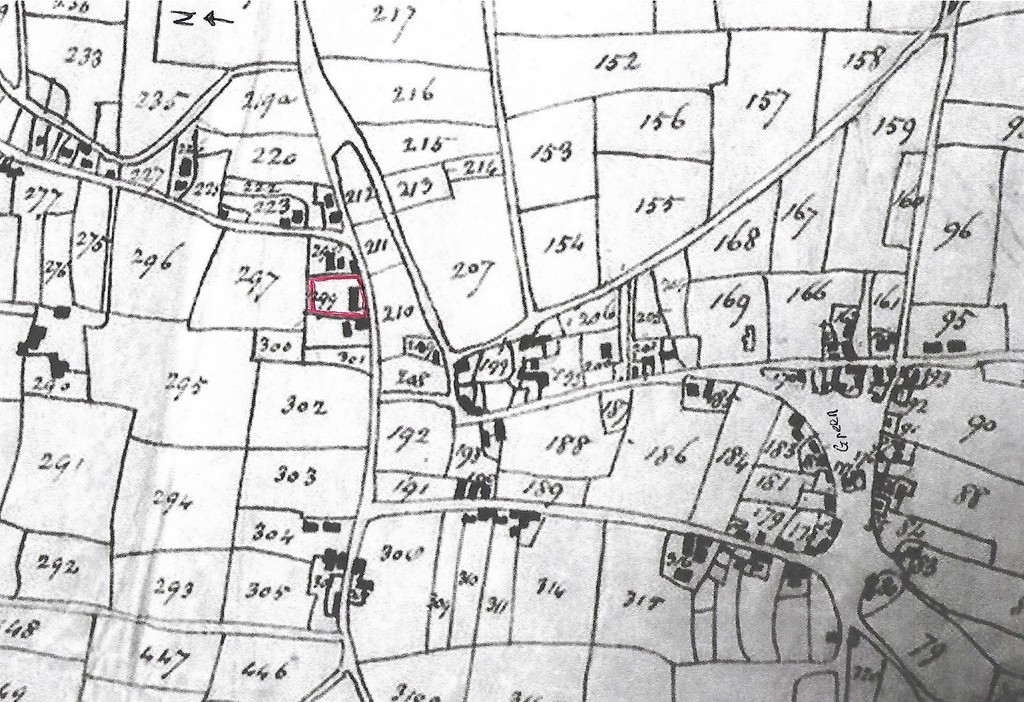
The owner/occupier of the house in 1812 was John Gifford Jeffrey (1766-1848) who was a surgeon and the village doctor. He was married to Sarah, nee Rust. They were both from Ludham but settled at Martham where they raised at least four children. John had retired by 1832 and moved to Great Yarmouth but retained ownership of the house which was probably let because by the time of the 1841 census the new village doctor, Anthony Crisp, was living there with his first wife Louisa who sadly died in 1844. Dr. John Jeffrey was still renting out the house and adjoining plots to Dr Crisp in 1842 at the time of the Martham Tithe Award. The house, adjoining barn and other land was listed as plots 9, 16 & 17 as shown on the copy of the Tithe map below.
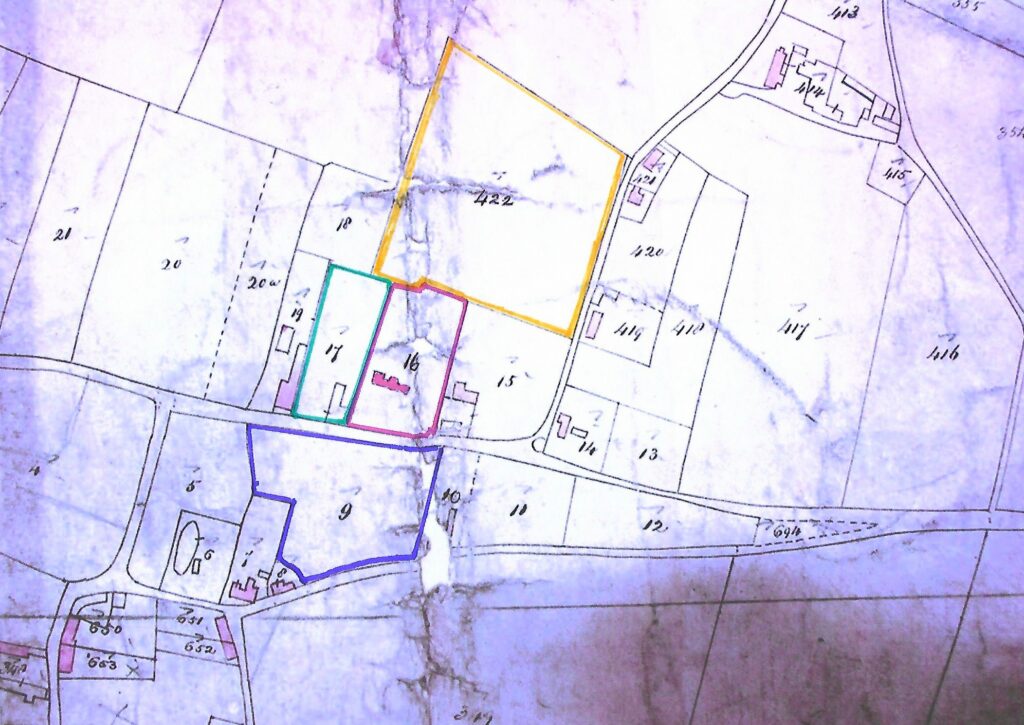
Dr. John Jeffrey died in late 1848 and in February 1849 the Jasmines was auctioned along with associated land. The advert is shown below confirming that Dr. Crisp was the occupier.
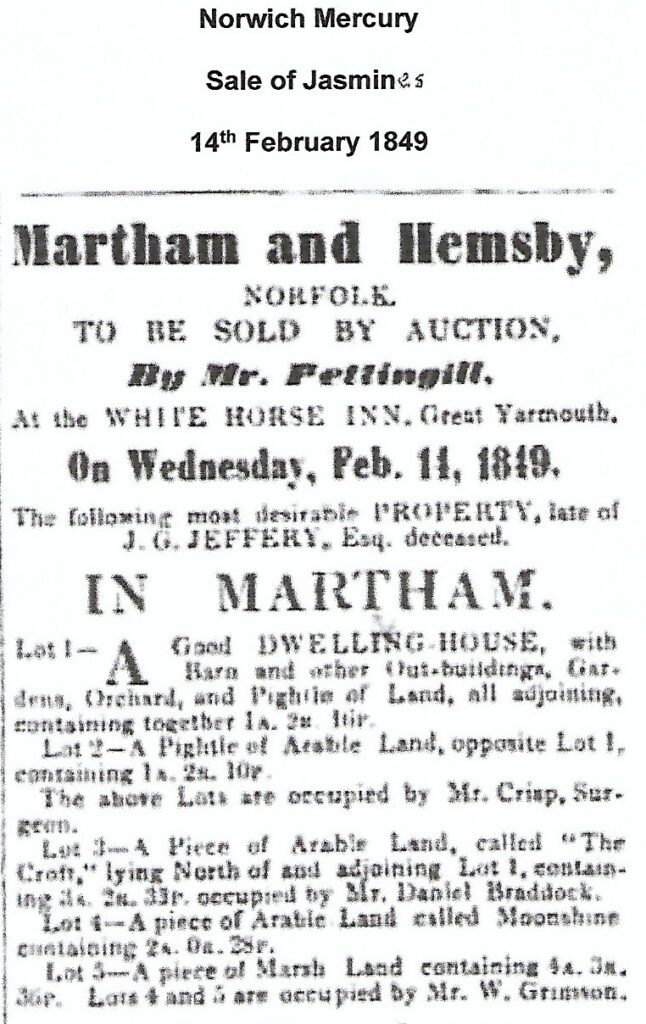
Dr. Anthony Crisp must have bought the house because he continued to live there for the rest of his life. After his first wife died, he married Rebecca Manship in 1848 and they went on to have at least ten children there. Subsequent census returns also showed that they had servants so the house must have been a hive of activity for many years. Dr. Crisp served the local community for over 60 years and you can read more about him and his son Anthony Jnr. by clicking on their names. Dr. Crisp died in 1900 and his widow Rebecca in 1906 and as a direct result the house, barn and land were put up for auction on 27th June 1906. The sale particulars are shown below and give a good insight into the accommodation at that time.
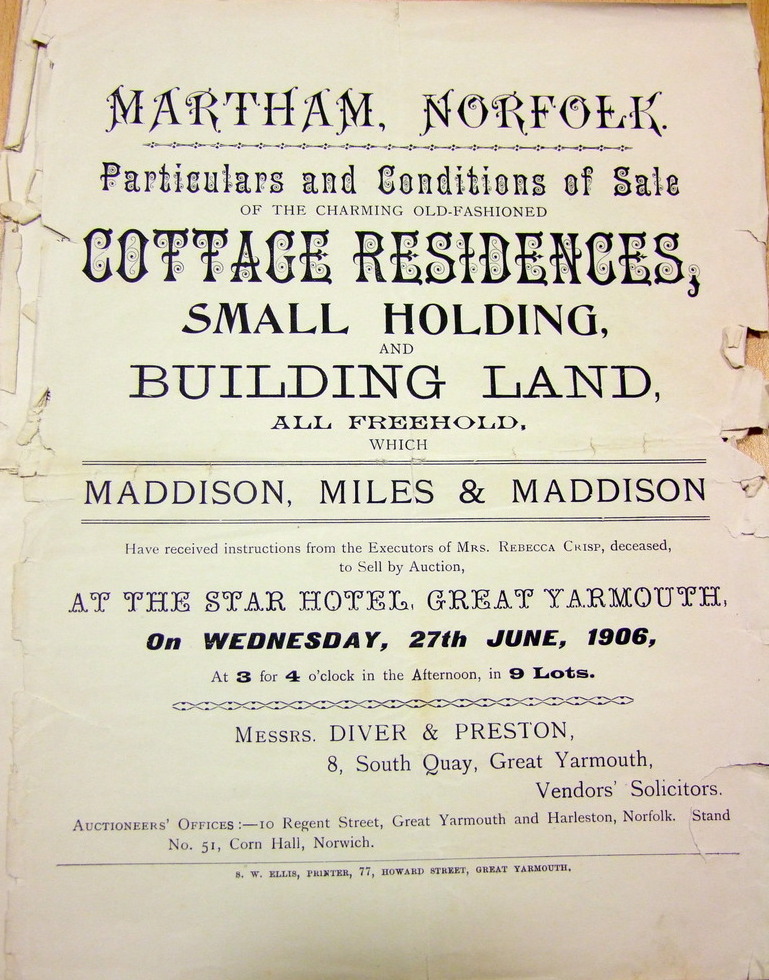
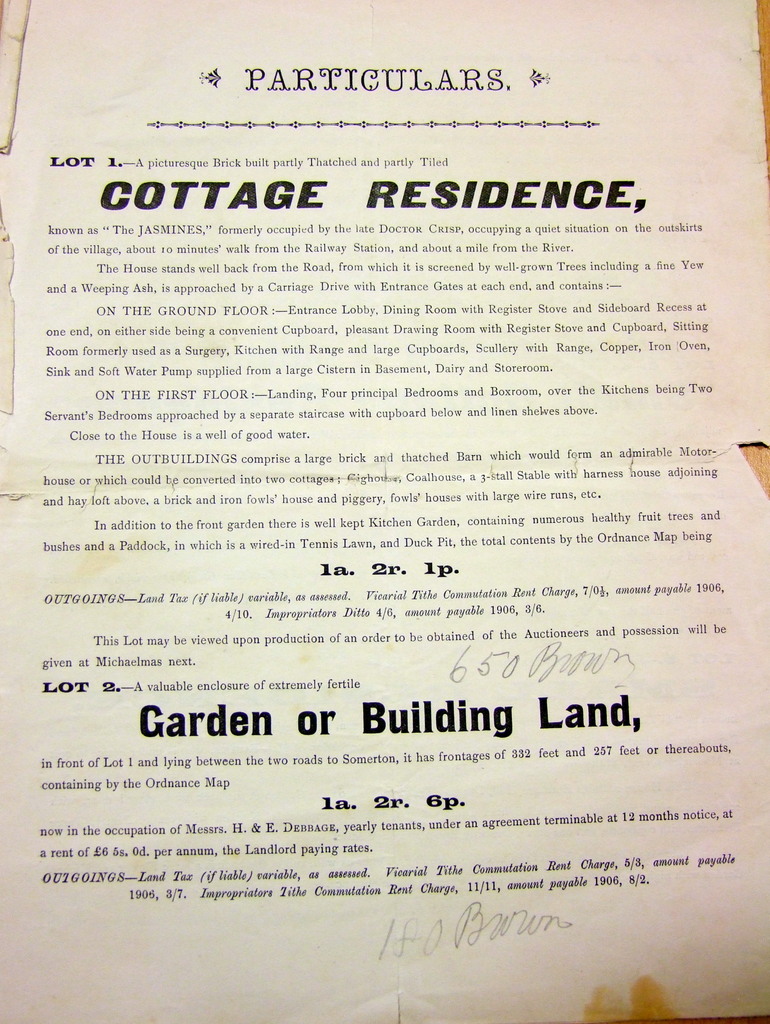
According to the brief newspaper report shown on the right from the Yarmouth Independent published on 30th June 1906 the house, barn and field opposite were bought by a Mr Brown for a total of £830 but we know that Anthony Crisp Jnr. continued to live there (as the tenant) because it was listed in the 1911 census as being his home along with his sister Ellen.
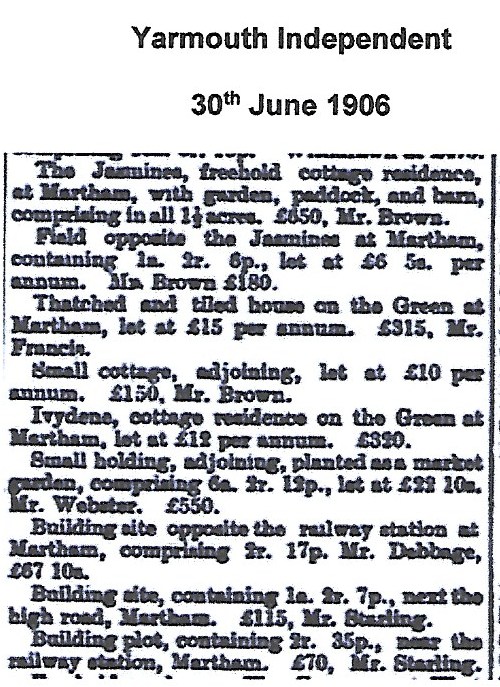
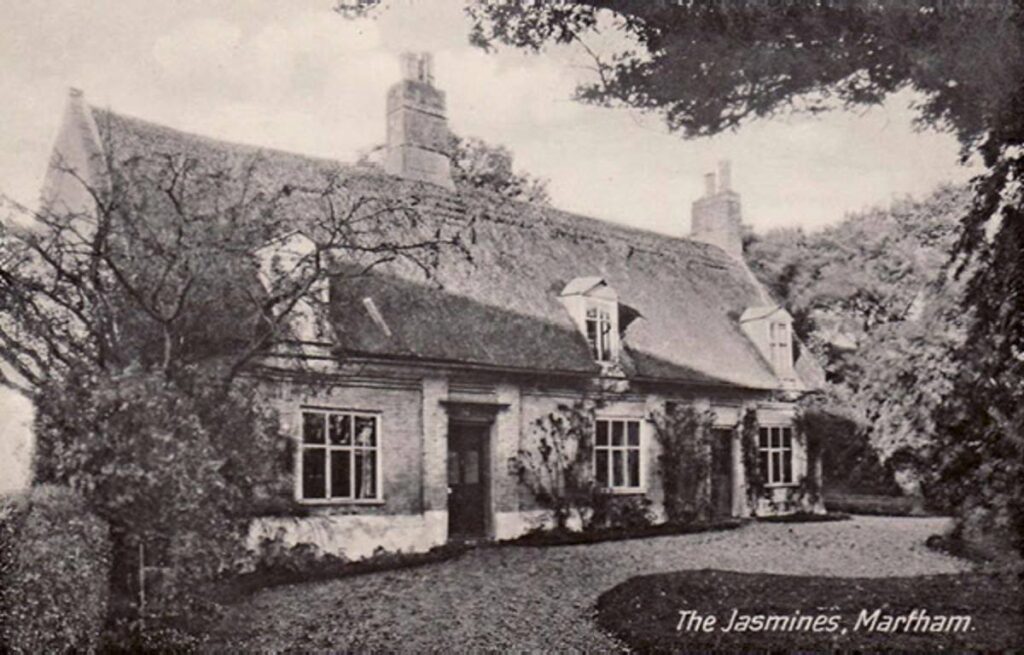
In June 1916 the house and adjoining paddocks etc again went up for auction attracting successful bids from a number of well known men from the village as the article shown below form the Yarmouth Independent of 10th June 1916 shows.
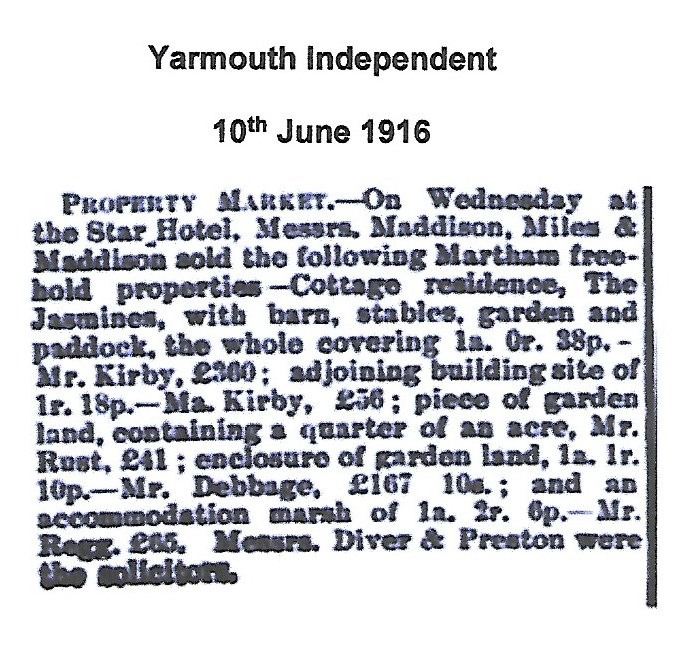
The Kirby who bought it was Edgar Kirby (1885-1963) of the haulage family of Black Street. Edgar was the great grandfather of Alister Kirby who can remember his grandad, Leonard, often mentioning the house and thinks Edgar eventually sold it for £600.
The house has changed hands several times since then and has been modernised and extended to the rear. The aerial photograph below shows how the changes have affected it with the new house to the east, converted barn, much reduced garden and altered driveway but it remains a fascinating and historic Martham home.
